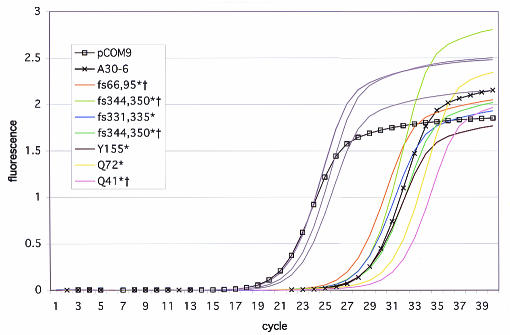FIG. 5.
Real-time RT-PCR analysis of intron splicing by pCOM9 intron mutants identified in the random mutagenesis screening analysis. The amplification curves for 12 mutants defective in plasmid transfer are shown. Three mutants (gray lines) had wild-type levels of splicing. Eight mutants (other lines) had significantly delayed appearance of the RT-PCR product compared to the time of appearance of the wild-type intron in pCOM9, indicating that there was significantly less spliced RNA. One splicing-defective mutant, A30-6, had mutations in the intron RNA. Seven mutants had deleterious mutations in the LtrA coding region. For example, mutant Y155* had a nonsense mutation for LtrA amino acid 155, and mutant fs331,335* had a frameshift mutation for amino acid 331 that resulted in a stop codon at amino acid 335. Two independent isolates with the fs344,350* mutation were observed. Mutants indicated by a dagger also had additional mutations in the intron or exons.

